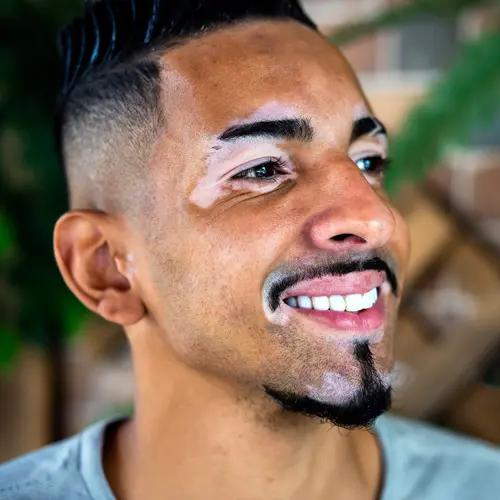Petechiae are tiny red, flat spots that appear on your skin. They’re caused by bleeding. They sometimes appear in clusters and may look like a rash. If you have tiny red, purple, or brown spots on your skin, they could be petechiae. They're not a disease, but a symptom. A number of things can cause them to happen, from a severe coughing fit to an infection.
Often, petechiae are nothing to worry about. Still, it's always a good idea to check with your doctor if you're not sure where these spots came from. Some conditions that cause petechiae are very serious.
Petechiae are more common in kids. If your child has this rash, especially with a fever, take them to a pediatrician right away.
Causes of Petechiae
Petechiae are a sign of blood leaking from capillaries under your skin. Capillaries are the tiniest blood vessels that connect arteries to veins. They help move oxygen and nutrients from your bloodstream to your organs and tissues. They also carry waste away from your organs and tissues.
Leaking in the capillaries could be due to an illness or a medicine you take. Petechiae may also form on your face, neck, or chest if you strain intensely or for a long time when you do things like:
Cough hard
Vomit
Give birth
Lift heavy weights
Many infections with bacteria, viruses, or fungi can cause these spots, too, including:
Viral infections like cytomegalovirus (CMV), endocarditis, mononucleosis, and the flu
Bacterial infections such as meningitis, Rocky Mountain spotted fever, scarlet fever, and strep throat
Henoch-Schonlein purpura, a disease that causes inflammation in the small blood vessels
Sepsis, a serious, body-wide response to an infection
Viral hemorrhagic fevers like dengue, Ebola, and yellow fever
Blood and immune disorders can also cause petechiae, such as:
Hemolytic-uremic syndrome (HUS), a group of blood disorders
Idiopathic thrombocytopenic purpura (ITP), an immune disorder that affects blood clotting
Leukemia, a type of blood cancer
Thrombocytopenia, low levels of platelets that help your blood clot
Vasculitis, or blood vessel inflammation
A lack of vitamin C (scurvy) or vitamin K in your diet can also lead to petechiae.
Reactions to certain medicines can cause these spots, too. Petechiae may be a side effect of drugs like:
Penicillin, an antibiotic
Phenytoin and valproic acid, which are seizure medications
Blood thinners (warfarin/heparin)
Antidepressants (desipramine)
NSAIDs (naproxen/indomethacin)
Heart rhythm drugs (atropine)
Sedatives (chloral hydrate)
What Does Petechiae Look Like?
Petechiae are flat and look like pinpoint-sized red, brown, or purple dots. Clumps of them on your skin look like a rash. But unlike many rashes, when you press on the spots they don't turn white. And if the spots are larger and red or purple, you may have another type of bleeding problem called purpura.
Petechiae can form just about anywhere on your body, even your eyelids or inside your mouth.
Petechiae Diagnosis
Petechiae with a fever in children can be a sign of a serious infection like meningococcal disease. Have a doctor check these symptoms right away.
The doctor will examine your child, look at the rash, and ask about their symptoms and recent illnesses. Blood and urine tests may help pinpoint the cause of the spots.
Other serious illnesses can also cause petechiae in your child. If your child has the spots, look out for these other symptoms:
Trouble breathing: If your child has shortness of breath or trouble breathing along with petechiae, it can be a sign of a serious condition called endocarditis. Endocarditis means there’s an infection in the lining of the inner chambers of the heart and the valves.
Confusion: Petechiae -- along with confusion -- could indicate that your child has Rocky Mountain spotted fever, an infection caused by the bite of a tick.
Change in consciousness:Some infections caused by viruses, known as viral hemorrhagic fevers, can cause changes in consciousness as well as show signs of petechiae. These diseases include dengue, yellow fever, lassa, marburg, and ebola. They’re found in tropical countries and cases in the U.S. are usually from people who traveled to these areas.
Call their doctor right away if you have any concerns.
Petechiae Treatment and Home Remedies
The rash itself doesn't need treatment. If it’s caused by a virus, the spots should clear up as soon as the infection goes away.
If you think your petechiae might have been caused by a minor incident, like strenuous coughing, vomiting, or weightlifting, you may be able to take care of it at home by doing the following;
Resting
Taking extra fluids to prevent dehydration
However, since petechiae may be the result of a serious underlying condition it is best to consult your doctor when these spots appear.
If you have a bacterial infection, you may need to take antibiotics. Make sure you take the full dose of medicine, even if you start to feel better.
More serious diseases such as meningococcal infections, blood disorders, or cancer may need treatment in a hospital. Your doctor may suggest you see a specialist in infections, blood diseases (hematologist), or cancer (oncologist) to oversee your care.
Petechiae Prevention
The only way to avoid getting petechiae is to try to prevent the various conditions that can cause it. Take good care of yourself:
Practice good hygiene such as washing your hands, brushing your teeth, and sanitizing your living environment. Don’t share personal items (straws, utensils, tooth brushes etc).
Avoid procedures that can lead to skin infections like getting tattoos and piercings. Pay close attention to your health and see your doctor about fevers and infections that don’t resolve quickly.
Eat fruits and vegetables or take supplements to ensure you get enough vitamins in your diet.
Get vaccinated (immunized) to prevent certain types of bacterial meningitis.
Avoid mosquitoes and ticks by wearing long pants and long-sleeve shirts if you’re in an affected area and use insect repellents containing DEET.

